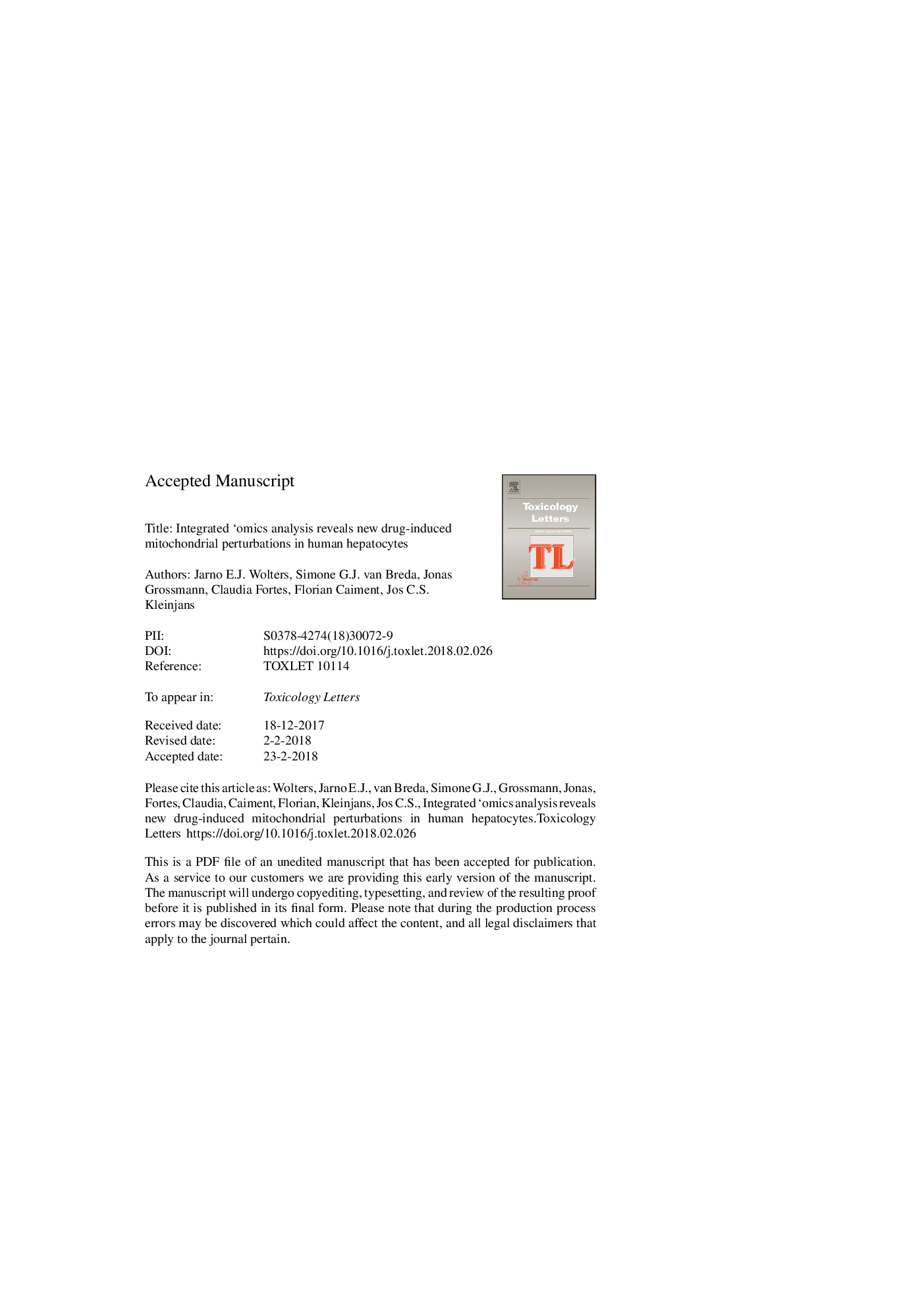| Article ID | Journal | Published Year | Pages | File Type |
|---|---|---|---|---|
| 8553310 | Toxicology Letters | 2018 | 45 Pages |
Abstract
We performed a multiple 'omics study by integrating data on epigenomic, transcriptomic, and proteomic perturbations associated with mitochondrial dysfunction in primary human hepatocytes caused by the liver toxicant valproic acid (VPA), to deeper understand downstream events following epigenetic alterations in the mitochondrial genome. Furthermore, we investigated persistence of cross-omics changes after terminating drug treatment. Upon transient methylation changes of mitochondrial genes during VPA-treatment, increasing complexities of gene-interaction networks across time were demonstrated, which normalized during washout. Furthermore, co-expression between genes and their corresponding proteins increased across time. Additionally, in relation to persistently decreased ATP production, we observed decreased expression of mitochondrial complex I and III-V genes. Persistent transcripts and proteins were related to citric acid cycle and β-oxidation. In particular, we identified a potential novel mitochondrial-nuclear signaling axis, MT-CO2-FN1-MYC-CPT1. In summary, this cross-omics study revealed dynamic responses of the mitochondrial epigenome to an impulse toxicant challenge resulting in persistent mitochondrial dysfunctioning. Moreover, this approach allowed for discriminating between the toxic effect of VPA and adaptation.
Keywords
Related Topics
Life Sciences
Environmental Science
Health, Toxicology and Mutagenesis
Authors
Jarno E.J. Wolters, Simone G.J. van Breda, Jonas Grossmann, Claudia Fortes, Florian Caiment, Jos C.S. Kleinjans,
